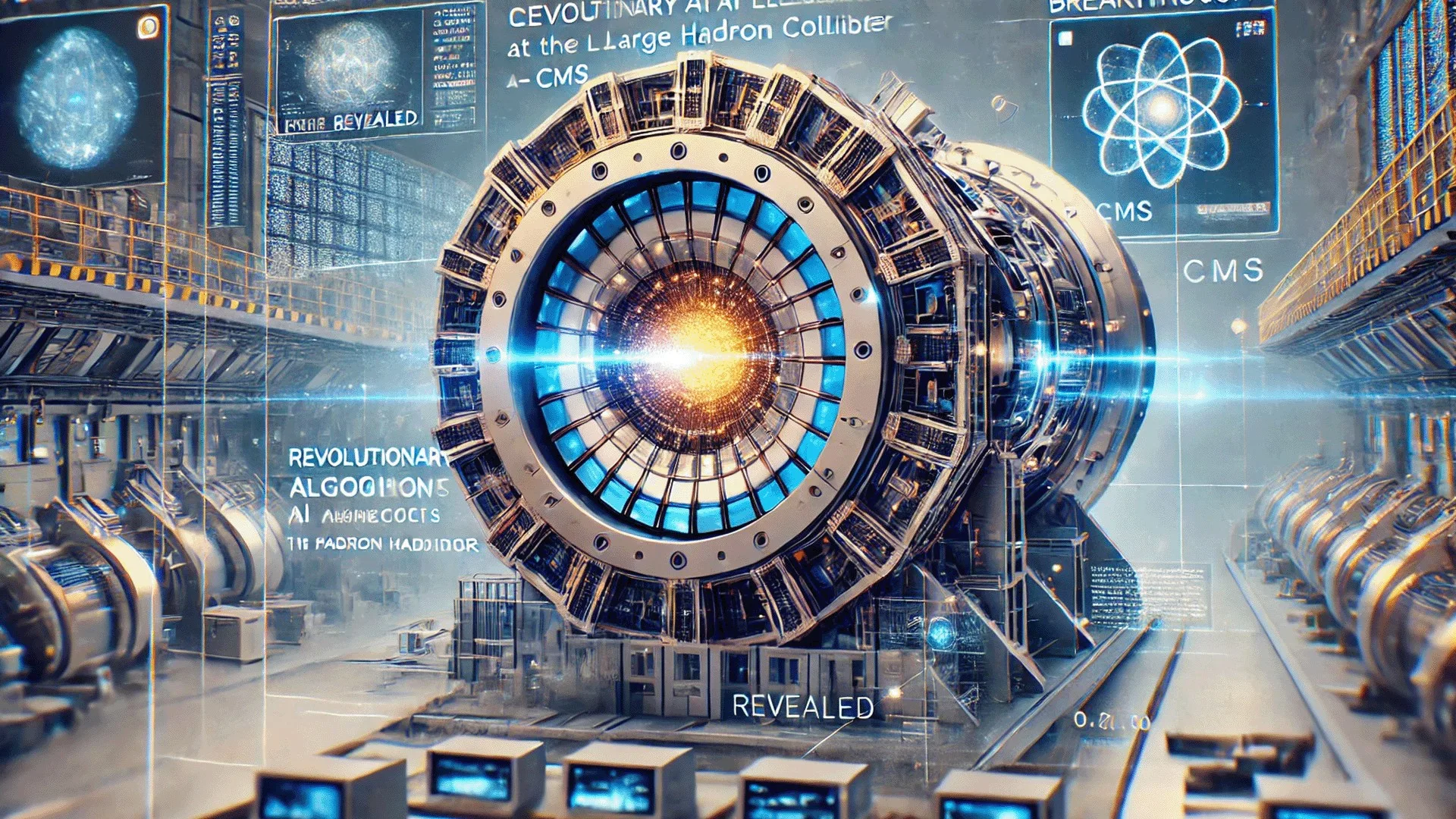The Large Hadron Collider (LHC), operated by CERN, is the world’s most powerful particle accelerator, renowned for its role in uncovering groundb
The Large Hadron Collider (LHC), operated by CERN, is the world’s most powerful particle accelerator, renowned for its role in uncovering groundbreaking insights into the nature of fundamental particles and forces. To achieve these remarkable scientific feats, the LHC produces a colossal amount of data from particle collisions, all of which must be meticulously monitored for quality. A key component aiding in this data monitoring is the CMS (Compact Muon Solenoid) detector, specifically its electromagnetic calorimeter (ECAL), which plays a crucial role in measuring particle energies.
In an era where artificial intelligence (AI) is transforming industries across the globe, CMS researchers have harnessed the potential of machine learning to enhance their data quality monitoring systems. In a significant leap forward, CMS has developed and implemented an advanced AI algorithm designed to detect anomalies in the data collected by the ECAL. This innovation marks a pivotal advancement in ensuring the accuracy and reliability of data processed at the LHC, providing physicists with higher-quality data to work with and ultimately pushing the boundaries of modern particle physics.
Understanding the Role of the CMS Electromagnetic Calorimeter (ECAL)
The CMS detector is one of the principal components of the LHC, tasked with analyzing high-energy particle collisions. At the heart of CMS, the electromagnetic calorimeter (ECAL) is dedicated to measuring the energy of particles like electrons and photons produced during these collisions. These measurements are essential for reconstructing particle decays and facilitating accurate experimental results.
Ensuring that the data recorded by the ECAL is precise and reliable is of paramount importance. Even minor anomalies in data quality can hinder the accuracy of experiments and analysis. Historically, the data quality monitoring system for the ECAL has relied on conventional software tools, which use a blend of predefined rules, thresholds, and manual inspection. While these traditional systems have been effective, they have limitations, particularly when it comes to detecting subtle or unanticipated anomalies.
The Evolution of Data Quality Monitoring at CMS
During the current Run 3 of the LHC, which commenced in 2022, the CMS team introduced a game-changing AI-based approach to improve data quality monitoring within the ECAL. This innovative technique leverages the capabilities of machine learning to identify anomalies with unprecedented accuracy and efficiency.
The traditional methods used by CMS were effective to a certain extent, but they required rigorous predefined conditions for identifying normal data behavior. This rigidity meant that anomalies that did not fit into established patterns could be overlooked. In contrast, the new AI-driven system can detect both subtle and complex deviations that might otherwise escape human notice.
The Core of the New System: Autoencoder-Based Anomaly Detection
At the heart of this breakthrough is an autoencoder-based machine-learning model, specifically designed for unsupervised learning tasks. Autoencoders are a type of neural network that learn by compressing input data into a latent space representation and then reconstructing the data from this compressed form. The reconstruction process helps the system identify discrepancies between input data and reconstructed output, allowing it to pinpoint anomalies.
The AI system deployed by CMS takes ECAL data, represented as 2D images, and feeds it into the autoencoder. By training on data considered to be “good” or typical, the system learns what normal behavior looks like. When presented with new data, any deviation from the learned normal behavior is flagged as an anomaly. This is a significant advancement because it enables the system to identify anomalies that evolve over time and may not be immediately obvious to human analysts or traditional software.
Real-Time Monitoring and Correction Capabilities
One of the most impressive features of this AI system is its real-time monitoring capability. The high-speed nature of the LHC environment demands quick detection and resolution of potential issues to maintain data integrity. The autoencoder-based system can process data on-the-fly, identifying and reporting anomalies as they occur. This rapid response allows for timely corrections, minimizing data loss and optimizing the overall performance of the CMS detector.
In 2022, the new system was first deployed in the barrel section of the ECAL, with deployment extending to the endcaps in 2023. This phased implementation has demonstrated the system’s robustness and adaptability to different sections of the detector.
Addressing Complex Data Challenges with Machine Learning
The implementation of machine learning in high-energy physics is not without challenges. The CMS team had to ensure that the new system could handle the unique characteristics of ECAL data, including noise, fluctuations, and the sheer volume of information processed during each LHC run. The autoencoder’s ability to learn from existing data and adapt to changes over time proved crucial in overcoming these challenges.
Machine learning algorithms, particularly those built on neural networks, require careful tuning and validation. The CMS researchers developed rigorous testing protocols to ensure the AI model’s reliability. This included training the autoencoder on a diverse set of data scenarios and validating its performance against known benchmarks.
Send emails, automate marketing, monetize content – in one place
Comparative Advantages Over Traditional Systems
Traditional data quality monitoring systems rely heavily on fixed rules and manual oversight. While these systems have been integral to the CMS operations for years, they come with limitations:
- Predefined Criteria: Conventional systems need clearly defined criteria to identify issues. This makes them prone to missing unexpected or non-standard anomalies.
- Manual Inspections: Human intervention is required for cross-checking flagged data, which can be time-consuming and may not always detect subtle issues.
- Response Time: The speed of anomaly detection and response in traditional systems can be slower compared to machine-learning-based solutions.
The new AI algorithm addresses these limitations by providing a more adaptive and comprehensive approach. By learning from historical data and evolving its understanding of normal behavior, the AI system can detect both standard and non-standard anomalies, thus greatly enhancing the reliability of data collected at the LHC.
Broader Implications for Other Fields
The potential applications of this new anomaly detection algorithm extend beyond the realm of high-energy physics. Industries that handle large-scale, high-speed data streams can benefit from similar machine-learning-based systems. For instance:
- Finance: Detecting irregular transactions or trading patterns in real-time can help prevent fraud and enhance financial security.
- Cybersecurity: AI-driven anomaly detection can be used to identify unusual network activity, helping to thwart cyber-attacks before they cause significant damage.
- Healthcare: Monitoring patient data for abnormal patterns can aid in early diagnosis of medical conditions and improve treatment outcomes.
The success of the CMS anomaly detection system illustrates the transformative power of AI in improving operational efficiency and reliability in complex data environments.
Challenges and Future Prospects
Despite its impressive capabilities, implementing AI in high-energy physics poses unique challenges. Training a model like an autoencoder requires a large amount of clean, reliable data, and achieving optimal performance demands substantial computational resources. CMS researchers are continuously working to fine-tune the system and explore additional enhancements, such as incorporating different types of neural networks and expanding the system’s coverage to other detector components.
Furthermore, as AI technology evolves, so do the techniques for training and deploying machine-learning models. Future iterations of the CMS monitoring system could incorporate more sophisticated AI models, such as generative adversarial networks (GANs) or reinforcement learning algorithms, to further improve the detection of complex anomalies.
Conclusion: A Step Forward for Particle Physics and Beyond
The development and deployment of the new AI algorithm for anomaly detection at CMS mark a significant advancement in data quality monitoring at the LHC. By integrating machine-learning techniques like autoencoders, CMS has created a more efficient and accurate system for identifying anomalies in the vast streams of data produced by high-energy particle collisions.
This achievement not only enhances the capabilities of the CMS detector but also sets a precedent for the application of AI in other data-intensive fields. As AI continues to evolve, its role in improving the analysis and reliability of complex data will only grow, opening new frontiers in both scientific research and industry.
Send emails, automate marketing, monetize content – in one place


